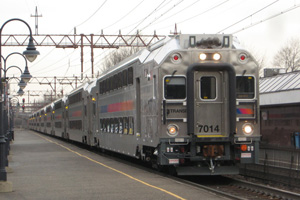New Jersey Future Blog
The Maryland Approach
November 8th, 2000 by Tim Evans
- Since 1975, Montgomery County Maryland has required that at least 15 percent of all new homes in any new development of 50 or more homes be affordable to moderate- and low-income families.
- Creating mixed-income neighborhoods in such modest proportions has had no adverse impact whatever on the resale value of market-rate homes in this wealthy D.C. suburb.
- Had New Jersey adopted a similar policy at the same time, its affordable housing stock would have risen by 105,000 homes. Instead, the State Council on Affordable Housing estimates that since 1985 it has 24,000 homes built or under construction. Independent experts put actual need at 900,000 homes.
New Jerseyans want more affordable housing – so much so, that in a May survey of 1,201 voters commissioned by New Jersey Future, fully 71 percent said they favored Maryland’s approach of requiring that all new housing include at least 15 percent for low- and moderate-income families.
New Jersey’s affordable housing system fails New Jerseyans in two ways. It fails to provide the housing needed – for the poor, as well as working people of moderate income, including teachers, police recruits, retail workers – and it fuels sprawl.
Today’s system places many communities unprotected in front of lawsuits by developers who will build the community’s “fair share” of affordable housing, but generally as a fraction of a much larger development than the community needs or wants. And a “regional contribution agreement” allows many municipalities to handoff up to half their affordable housing requirement to another community, usually a high-poverty city, for an average payment of $20,000 per home. This further concentrates poverty in New Jersey’s older communities, and works against the revival of these places.
An alternative “growth share” approach could work by modifying COAH’s current regulations to ensure that a fixed percentage of a municipality’s growth over the next 10 years be affordable housing. Alternatively, new legislation could be written patterned after the Montgomery County Maryland program.
New Jersey Future is developing a policy guide offering additional detail.
Comments? Questions?
Do you have comments or questions about these Facts and Issues? Contact us directly:
Facts Contact:
B. Tim Evans, NJF Research Director,
timevans njfuture
njfuture org (timevans
org (timevans njfuture
njfuture org)
org)
















